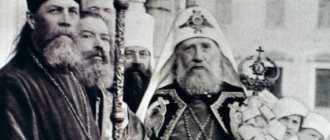Of course, 1 German soldier can kill 10 Soviet ones. But when the 11th comes, what will he do?
Franz Halder
The main goal of Germany's summer offensive campaign was Stalingrad. However, on the way to the city it was necessary to overcome the Crimean defense. And here the Soviet command unwittingly, of course, made life easier for the enemy. In May 1942, a massive Soviet offensive began in the Kharkov area. The problem is that this attack was unprepared and turned into a terrible disaster. More than 200 thousand people were killed, 775 tanks and 5,000 guns were lost. As a result, complete strategic advantage in the southern sector of hostilities was in the hands of Germany. The 6th and 4th German tank armies crossed the Don and began to advance deeper into the country. The Soviet army retreated, not having time to cling to advantageous defense lines. Surprisingly, for the second year in a row, the German offensive was completely unexpected by the Soviet command. The only advantage of 1942 was that now the Soviet units did not allow themselves to be easily surrounded.
general information
The date of the Battle of Stalingrad, or rather the beginning of the battles (the battle itself lasted for two hundred days) is July 17, 1942, it was then that the siege of the city began.
The defense was not only protracted, but also brutal. Moreover, the battle became significant for the entire war, just like the Battle of Kursk. After the battle, German troops lost the strategic initiative. During the defense of Stalingrad, the Verkhmat made an attempt to capture the left bank of the Volga. As a result of the battle, the allies of the Third Reich and the Sixth Army, which were located around and inside the city, were destroyed by the enemy, but not completely, but only partly. Other German soldiers were captured. The opponents lost not only soldiers, but also a lot of weapons, and subsequently their strength was never restored.
Much is important in the Battle of Stalingrad: the dates of iconic battles, the mood of the soldiers, because victory meant the beginning of the liberation of the Soviet Union. Following this, the Soviet army began liberating the occupied lands in Europe.
What happened before the battle
It is impossible to name the exact date of the Battle of Stalingrad, because the battle lasted more than one day. The siege of the city began in the middle of the Great Patriotic War, and before that there were already many battles. To understand how the battle began, you need to delve into the history of the beginning of the war.
In 1941, on June 22, the Third Reich, together with its allies, invaded Soviet territory. The invaders quickly moved inland. Our army suffered defeat after defeat in the summer and autumn of 1941, but in the Battle of Moscow it was able to counterattack the Germans. The soldiers of the Third Reich were poorly equipped for the Russian winter and also exhausted, so the Russians managed to push the enemy away from the capital.
In the winter of 1941-1942, the front finally stabilized. Hitler abandoned the idea of attacking Moscow again, although the generals insisted on a second attempt. The head of the Third Reich still believed that such an attack was very unpredictable, and began to look for other territories to capture.
German generals began to make plans for an offensive in the south and north. If the Germans managed to take control of the south, they would automatically get all the oil fields of the Caucasus. They would be able to control the Volga, the main transport artery that connected Central Asia and Transcaucasia with the European part of the Union. A German victory in the southern part of the country would greatly damage the Soviet economy and the production of military vehicles.
At this time, the Soviet leadership, inspired by the successes near the capital, made an attempt to seize the initiative. This happened in May 1942: all the forces of the army were sent to the offensive near Kharkov. The attack began on the Barvenkovsky ledge, located slightly south of the city. The ledge appeared due to the winter offensive of the Southwestern Front. In this attack, the Soviet army used for the first time a tank corps roughly equivalent to a German division. At the same time, the Germans were thinking about how to cut off the Barvenkovsky ledge.
The Russian offensive was unexpected for the Third Reich, so a disaster almost occurred with the Army Group South. The Germans decided not to change plans. Concentrating troops on the flanks of the bulge, the Nazis broke through the Soviet defenses. Almost the entire Southwestern Front was surrounded by the Germans. The second battle for Kharkov was a three-week battle and turned into a devastating defeat for the Red Army. More than two hundred thousand people were captured, and many heavy weapons were lost. After the defeat, the front near Voronezh was almost open, and the Soviet army lost Rostov-on-Don, the key to the Caucasus.
There was not much time left before the battle of Stalingrad, but the opponents did not retreat. In May 1942, Hitler ordered the Southern Army to split in two. One group was to continue to advance in the North Caucasus. The commander-in-chief sent another army eastward, to Stalingrad.
Offensive stage of the Battle of Stalingrad
The strategic offensive operation began on November 19, 1942 and ended on February 2, 1943. It was carried out by forces of three fronts.
To make a decision to launch a counterattack, at least three conditions must be met. First, the enemy must be stopped. Secondly, it should not have strong nearby reserves. Thirdly, the availability of forces and means sufficient to carry out the operation. By mid-November, all these conditions were met.
Plans of the parties, balance of forces and means
From November 14, according to Hitler's directive, German troops switched to strategic defense. Offensive operations continued only in the Stalingrad direction, where the enemy stormed the city. The troops of Army Group B occupied the defense from Voronezh in the north to the Manych River in the south. The most combat-ready units were located at Stalingrad, and the flanks were defended by Romanian and Italian troops. The commander of the army group had 8 divisions in reserve; due to the activity of Soviet troops along the entire length of the front, he was limited in the depth of their use.
KV-1 crews and tanks during the transfer to Stalingrad
The Soviet command planned to carry out the operation with forces from the Southwestern, Stalingrad and Don fronts. The following tasks were identified to them:
- The Southwestern Front - a strike group consisting of three armies - should go on the offensive in the direction of the city of Kalach, defeat the 3rd Romanian Army and join forces with the troops of the Stalingrad Front by the end of the third day of the operation.
- Stalingrad Front - a strike group consisting of three armies to go on the offensive in a northwestern direction, defeat the 6th Army Corps of the Romanian Army and link up with the troops of the Southwestern Front.
- Don Front - strikes of two armies in converging directions to encircle the enemy with subsequent destruction in the small bend of the Don.
The difficulty was that in order to carry out encirclement tasks it was necessary to use significant forces and means to create an internal front - to defeat the German troops inside the ring, and an external one - to prevent the release of those encircled from the outside.
Planning for the Soviet counteroffensive began in mid-October, at the height of the fighting for Stalingrad. The front commanders, by order of Headquarters, managed to create the necessary superiority in personnel and equipment before the start of the offensive. On the Southwestern Front, Soviet troops outnumbered the Nazis in personnel by 1.1, in artillery by 1.4, and in tanks by 2.8. In the Don Front zone the ratio was as follows: in personnel 1.5 times, in artillery 2.4 times in favor of our troops, in tanks there was parity. The superiority of the Stalingrad Front was: 1.1 times in personnel, 1.2 times in artillery, 3.2 times in tanks.
It is noteworthy that the concentration of strike groups took place secretly, only at night and in bad weather conditions.
Loading of ammunition delivered along the Volga to Red Army units
A characteristic feature of the developed operation was the principle of massing aviation and artillery in the directions of the main attacks. It was possible to achieve an unprecedented artillery density - in some areas it reached 117 units per kilometer of front.
Difficult tasks were also assigned to engineering units and units. A huge amount of work had to be done to clear mines from areas, terrain and roads, and to establish crossings.
Progress of the offensive operation
The operation began as planned on November 19. The offensive was preceded by powerful artillery preparation.
In the first hours, the troops of the Southwestern Front wedged themselves into enemy defenses to a depth of 3 kilometers. Developing the offensive and introducing fresh forces into the battle, our strike groups advanced 30 kilometers by the end of the first day and thereby encircled the enemy from the flanks.
Things were more complicated at the Don Front. There, our troops faced stubborn resistance in conditions of extremely difficult terrain and the enemy’s defense was saturated with mine and explosive barriers. By the end of the first day, the depth of the wedge was 3-5 kilometers. Subsequently, the front troops were drawn into protracted battles and the enemy 4th Tank Army managed to avoid encirclement.
Commanders of the Red Army and Navy conduct surveillance near Stalingrad
For the Nazi command, the counteroffensive came as a surprise. Hitler's directive on the transition to strategic defensive actions was dated November 14, but they did not have time to move on to it. On November 18, in Stalingrad, Nazi troops were still advancing. The command of Army Group B mistakenly determined the direction of the main attacks of the Soviet troops. During the first 24 hours, it was at a loss, only sending telegrams to Wehrmacht headquarters stating the facts. The commander of Army Group B, General Weihe, ordered the commander of the 6th Army to stop the offensive in Stalingrad and allocate the necessary number of formations in order to stop the Russian pressure and cover the flanks. As a result of the measures taken, resistance in the offensive zone of the Southwestern Front increased.
On November 20, the offensive of the Stalingrad Front began, which once again came as a complete surprise to the Wehrmacht leadership. The Nazis urgently needed to look for a way out of the current situation.
The troops of the Stalingrad Front broke through the enemy’s defenses on the first day and advanced to a depth of 40 kilometers, and on the second day another 15. By November 22, a distance of 80 kilometers remained between the troops of our two fronts.
German military leader Friedrich Paulus
Units of the Southwestern Front crossed the Don on the same day and captured the city of Kalach. The Wehrmacht headquarters did not stop trying to find a way out of the difficult situation. Two tank armies were ordered to be transferred from the North Caucasus. Paulus was ordered not to leave Stalingrad. Hitler did not want to accept the fact that he would have to retreat from the Volga. The consequences of this decision will be fatal both for Paulus’s army and for all Nazi troops.
By November 22, the distance between the advanced units of the Stalingrad and Southwestern fronts was reduced to 12 kilometers. At 16.00 on November 23, the fronts joined forces. The encirclement of the enemy group was completed. There were 22 divisions and auxiliary units in the Stalingrad “cauldron”. On the same day, Romanian corps numbering almost 27 thousand people were captured.
However, a number of difficulties arose. The total length of the outer front was very large, almost 450 kilometers, and the distance between the inner and outer front was insufficient. The task was to move the external front as far to the west as possible in the shortest possible time in order to isolate the encircled Paulus group and prevent its release from the outside. At the same time, it was necessary to create powerful reserves for stability. At the same time, the formations on the internal front had to begin destroying the enemy in the “cauldron” in a short time.
A German officer looks through binoculars near a bridge in Stalingrad
Until November 30, troops on three fronts tried to cut the encircled 6th Army into pieces, while simultaneously compressing the ring. By this day, the area occupied by enemy troops had decreased by half.
It should be noted that the enemy stubbornly resisted, skillfully using reserves. In addition, his strength was assessed incorrectly. The General Staff assumed that there were approximately 90 thousand Nazis surrounded, while the real number exceeded 300 thousand.
Paulus turned to the Fuhrer with a request for independence in decision-making. Hitler deprived him of this right and ordered him to remain surrounded and wait for help.
The counteroffensive did not end with the group's encirclement; Soviet troops seized the initiative. The defeat of the enemy troops was soon to be completed.
Operation Saturn and Ring
The Wehrmacht headquarters and the command of Army Group B began the formation of Army Group Don in early December, designed to relieve the group that was encircled at Stalingrad. This group included formations transferred from Voronezh, Orel, the North Caucasus, from France, as well as parts of the 4th Tank Army that escaped encirclement. At the same time, the balance of forces in favor of the enemy was overwhelming. In the breakthrough area, he outnumbered the Soviet troops in men and artillery by 2 times, and in tanks by 6 times.
In December, Soviet troops had to begin solving several tasks at once:
- Developing the offensive, defeat the enemy in the Middle Don - to solve this, Operation Saturn was developed
- Prevent the breakthrough of Army Group Don to the 6th Army
- To eliminate the encircled enemy group - for this they developed Operation Ring.
On December 12, the enemy launched an offensive. At first, using their great superiority in tanks, the Germans broke through the defenses and advanced 25 kilometers in the first 24 hours. During the 7 days of the offensive operation, enemy forces approached the encircled group at a distance of 40 kilometers. The Soviet command urgently activated reserves.
Map of Operation Little Saturn
In the current situation, the Headquarters made adjustments to the plan for Operation Saturn. The troops of the South-Western and part of the forces of the Voronezh Front, instead of attacking Rostov, were ordered to move it to the south-east, take the enemy in pincers and go to the rear of the Don Army Group. The operation was called "Little Saturn". It began on December 16, and in the first three days they managed to break through the defenses and penetrate to a depth of 40 kilometers. Using our advantage in maneuverability, bypassing pockets of resistance, our troops rushed behind enemy lines. Within two weeks, they pinned down the actions of Army Group Don and forced the Nazis to go on the defensive, thereby depriving Paulus’s troops of their last hope.
On December 24, after a short artillery preparation, the Stalingrad Front launched an offensive, delivering the main blow in the direction of Kotelnikovsky. On December 26, the city was liberated. Subsequently, the front troops were given the task of eliminating the Tormosinsk group, which they completed by December 31. From this date, regrouping began for the attack on Rostov.
As a result of successful operations in the Middle Don and in the Kotelnikovsky region, our troops managed to thwart the Wehrmacht’s plans to release the encircled group, defeat large formations and units of German, Italian and Romanian troops, and push the external front away from the Stalingrad “cauldron” by 200 kilometers.
Aviation, meanwhile, placed the encircled group in a tight blockade, minimizing attempts by the Wehrmacht headquarters to organize supplies for the 6th Army.
Operation Saturn
From January 10 to February 2, the command of the Soviet troops carried out an operation code-named “Ring” to eliminate the encircled 6th Army of the Nazis. Initially, it was assumed that the encirclement and destruction of the enemy group would take place in a shorter period of time, but the lack of forces on the fronts affected them, and they were unable to cut the enemy group into pieces right off the bat. The activity of German troops outside the cauldron delayed part of the forces, and the enemy himself inside the ring by that time had not weakened at all.
The operation was entrusted by the Headquarters to the Don Front. In addition, part of the forces was allocated by the Stalingrad Front, which by that time had been renamed the Southern Front and was given the task of attacking Rostov. The commander of the Don Front in the Battle of Stalingrad, General Rokossovsky, decided to dismember the enemy group and destroy it piece by piece with powerful cutting blows from west to east. The balance of forces and means did not give confidence in the success of the operation. The enemy outnumbered the troops of the Don Front in personnel and tanks by 1.2 times and was inferior in artillery by 1.7 times and in aviation by 3 times. True, due to a lack of fuel, he could not fully use motorized and tank formations.
Operation Ring
On January 8, the Nazis received a message with a proposal to surrender, which they rejected. On January 10, under the cover of artillery preparation, the offensive of the Don Front began. During the first day, the attackers managed to advance to a depth of 8 kilometers. Artillery units and formations supported the troops with a new type of accompanying fire at that time, called the “barrage of fire.”
The enemy fought on the same defensive lines on which the Battle of Stalingrad began for our troops. By the end of the second day, the Nazis, under pressure from the Soviet army, began to randomly retreat to Stalingrad.
Why this city?
The Battle of Stalingrad was necessary for the head of the Third Reich for several reasons:
- Stalingrad at that time was the main industrial city on the Volga.
- The city was a very important point on the route between Northern Russia and the Caspian Sea.
Captured Stalingrad would become a guarantor of the security of the left flank of the Germans, who continued to advance into the Caucasus. Moreover, if Hitler had been able to conquer Stalingrad, which bore the name of the Soviet leader, this would have been excellent propaganda and a demonstration of omnipotence.
Further developments
In the offensive operation, the Army "South" attacked the troops of the South-Western and Bryansk Front. Although there was a two-month break in fighting on the Bryansk Front, the army was still exhausted and exhausted no less than the Southwestern Front. On the first day of the attack, the Germans broke through both fronts and rushed to the Don. The Red Army at first weakly resisted in the steppes, and then began to retreat to the east in complete disarray. The Russians tried to resist again, but, since they were already exhausted from the fighting, the attempt failed. In the first year of the Battle of Stalingrad, the soldiers were already exhausted and did not believe in victory.
The German plans were thwarted by the offensive operation in Voronezh. The German army easily captured part of the city on the right bank, but that was where the luck ended, and the front line aligned with the river. The left bank was under the control of the Soviet army, the soldiers were firmly entrenched on that side and were not going to give it up to the Germans. Hitler's army could no longer continue the offensive, so the battle for Voronezh entered a passive phase. The offensive on Voronezh was stopped by order of the German commanders-in-chief, because it was decided to send all the forces of the German army to Stalingrad. The most combat-ready soldiers went to Paulus's army to participate in the Battle of Stalingrad.
The year Rostov was taken, Adolf Hitler decided to transfer the Fourth Panzer Division from the group advancing into the Caucasus to the group aimed at the Volga and Stalingrad. All the changes caused a traffic jam because one of the armies needed several roads to connect with other soldiers. This slowed the German advance for a week, so Hitler decided to withdraw the Fourth Panzer Division back to Stalingrad.
Balance of power
During the defense of Stalingrad, enemy forces were distributed as follows:
- To attack the city, Hitler allocated an army under the command of Paulus. It had 270 thousand people, divided into 13 divisions. The army had three thousand mortars and guns and 500 tanks. A fourth air fleet consisting of 1,200 aircraft was sent to support the Germans. In addition, the fleet had another forty Romanian obsolete aircraft.
- In the Soviet Union, the 63rd, 62nd, 21st, 64th, 38th, 28th and 57th combined arms armies were located on the Stalingrad Front. The Volga Military Flotilla and the 8th Air Army were also sent in support. The soldiers had 2,200 guns along with mortars, and approximately 400 tanks. From the air, Soviet soldiers were insured by 454 aircraft, 60 air defense fighters, and 200 long-range bombers.
Losses in the Battle of Stalingrad
All stages of the Battle of Stalingrad were very bloody. The losses on both sides were colossal. Until now, data from different sources differ greatly from each other. It is generally accepted that the Soviet Union lost over 1.1 million people killed. On the part of the fascist German troops, the total losses are estimated at 1.5 million people, of which the Germans account for about 900 thousand people, the rest are the losses of the satellites. Data on the number of prisoners also vary, but on average their number is close to 100 thousand people.
Captured German soldiers at Stalingrad
Equipment losses were also significant. The Wehrmacht was missing about 2,000 tanks and assault guns, 10,000 guns and mortars, 3,000 aircraft, and 70,000 vehicles.
The consequences of the Battle of Stalingrad were fatal for the Reich. It was from this moment that Germany began to experience mobilization hunger.
Start of the battle
At the end of July, the Germans managed to push our troops back beyond the Don. The line of defense extended from north to south along the Don. To organize defense throughout the territory, the Germans used not only their own army, but also soldiers of the Romanian, Hungarian and Italian allies. The Sixth Army was close to Stalingrad, so the Fourth Panzer Division rushed to its aid to take the city. The second group was still moving deeper into the Caucasus, but was in no hurry to advance. The two armies could not join forces because they were in different parts of the country.
In July, Hitler's intentions became clear to the Soviet leadership, which began to quickly develop a plan for the defense of the city. Additional troops were sent to the eastern bank of the river. A new army was also created under the leadership of Vasily Chuikov, he set himself the task of defending Stalingrad by any means.
In 1942, on August 23, a German tank corps under the command of Paulus reached the river a little north of Stalingrad.
Urban fighting
At the end of August, fighting began within the city. The 62nd and 64th armies tried to hold the outer line of defense, but the onslaught of the 6th German army was too serious. At the same time, tanks from the Wehrmacht's 14th Panzer Corps entered Stalingrad from the north. On August 23, fighting for the tractor plant began, but the Red Army was unable to hold it. In September, communication with the armies surrounded in the city went only through the Volga.
In mid-September, battles began for the center of Stalingrad. Battles were fought for literally every house - or rather, for what was often left of them. “Mamaev Kurgan”, “Pavlov’s House”, “Red October” - almost everyone knows the names of those houses or areas for which the most difficult battles were fought. Locked in the city and surrounded on all sides by Wehrmacht units, the 62nd and 64th armies had difficulty defending themselves in conditions of lack of ammunition and food.
Pavlov's House. Modern look. (Wikimedia Commons)
Due to the peculiarities of combat conditions, battles were predominantly hand-to-hand in nature. Red Army soldiers and German troops could sometimes be separated by just the wall of a house.
By November 1942, Soviet troops held only three bridgeheads in Stalingrad. However, the Germans were also so exhausted by months of fighting that they were unable to completely dislodge the Red Army from the Volga coast. At this time, Headquarters began to develop an operation to defeat the 6th Army of the Wehrmacht.
Battles in the city
Where did the Battle of Stalingrad take place? The battle began in the city itself, where legends still circulate that Joseph Vissarionovich did not allow the evacuation of residents. No documentary evidence has been found for this fact, so we will assume that this is fiction. The evacuation proceeded very slowly. When the Battle of Stalingrad took place, we already found out that it was time to move on to evacuation. By the beginning of the battles, approximately 300 thousand out of four hundred residents remained in the city. Only on August 24, the City Defense Committee adopted a resolution on the evacuation of children, women and the wounded to the other side of the Volga. There, residents worked with their children: they built trenches and other fortifications.
The powerful bombing on August 23 not only destroyed the city, but also killed more than forty thousand people. More than half of the old city's housing stock had been destroyed, and the landscape now looked very bleak: bodies and burning ruins everywhere.
The battle began with the 1077th Anti-Aircraft Regiment, which then actively participated in all significant battles. The legendary regiment is mentioned in the description of each date of the Battle of Stalingrad. By the beginning of the battles, the unit consisted mainly of female volunteers who, moreover, had no experience in destroying targets on the ground. Despite the difficult situation, the regiment continued to fight until it was completely destroyed. By the end of August, Hitler's Second Army approached the Volga from the northern side of the city, and then to the south.
The dates of the Battle of Stalingrad were remembered not only because of the brutality of the fighting, but also because at the initial stage our defense consisted of a people's militia of workers who were not involved in military production. Volunteer crews continued to man and build tanks, including women. Often the equipment was immediately sent to the front, without even having time to paint it and install sighting equipment.
What year was the Battle of Stalingrad? The siege of the city lasted from 1942 to 1943, during which time so much changed! At the beginning of September, the Soviet leadership could only provide the army with dangerous river crossings. In the destroyed Stalingrad, defensive positions were built with firing points located in factories and buildings. The battle in the city was desperate. The Germans continued to move deeper into Stalingrad, but also suffered significant losses.
Reinforcements for the Soviet army arrived from the eastern bank, this was very difficult because the soldiers were under constant fire from planes and German artillery. On average, a newly arrived private rarely lived longer than a day. In the German army there was complete cooperation between units, so the Red Army had to keep the front line very close to the enemy. The fascist troops were forced to fight, fearing that their own artillery would kill them. Every house, street or factory was won back in a painful struggle.
The siege of Stalingrad was brutal, but even more painful was the battle on Mamayev Kurgan. The hill passed from one army to another several times. The battle at the grain elevator was so intense that the soldiers of both armies could feel the enemy's breath. The fighting lasted for weeks until our army gave up ground. Another part of the city was also involved. An impregnable fortress was built in an apartment building that was defended by a Soviet platoon. This building even got its name in honor of Yakov Pavlov, who lived in it before the battle. Our soldiers defended the house with machine gun positions and minefields.
The end of the battle was still far away, and heavy artillery began to be brought to Stalingrad. The enemy did not try to cross the river, so Soviet soldiers continued to build artillery batteries. The Red Army used the new ruins as a defense. Fascist tanks could not cross the mountains of cobblestones, but if they succeeded, they were met by Soviet anti-tank units.
For both commanders-in-chief, the battle for the city became not only a matter of strategic importance, but also a matter of prestige. How long did the Battle of Stalingrad last? Two hundred days, and all this time the military leaders were not relieved of tension. According to rumors, Paulus even developed a nervous tic in one eye.
By November, the Germans reached the banks of the Volga. At the same time, they captured approximately 90% of the destroyed Stalingrad. The remaining Soviet army was divided into several parts, because of this the soldiers ended up in two cauldrons. The weather was severe and the river was covered with a crust of ice. This prevented boats with cargo from approaching the shore and providing necessary supplies to Soviet soldiers in distress. The fight on Mamayev Kurgan and in other parts of the city continued with the same passion. While the battle for the city was going on, factory workers were repairing damaged military equipment. Sometimes workers had to go to the battlefield if the breakdown was serious and required immediate repair.
Battle of Stalingrad - fighting on the outskirts
On July 17, the forward detachments of our troops entered into battle with the enemy vanguard. This date marked the beginning of the battle. During the first six days, we managed to slow down the pace of the offensive, but it still remained very high. On July 23, the enemy attempted to encircle one of our armies with powerful attacks from the flanks. The command of the Soviet troops in a short time had to prepare two counterattacks, which were carried out from July 25 to 27. These attacks prevented encirclement. By July 30, the German command threw all its reserves into battle. The offensive potential of the Nazis was exhausted. The enemy switched to a forced defense, awaiting the arrival of reinforcements. Already on August 1, the tank army, transferred to Army Group A, was returned back to the Stalingrad direction.
During the first 10 days of August, the enemy was able to reach the outer defensive perimeter and, in some places, break through it. Due to active enemy actions, the defense zone of our troops increased from 500 to 800 kilometers, which forced our command to divide the Stalingrad Front into two independent ones - Stalingrad and the newly formed South-Eastern Front, which included the 62nd Army. Until the end of the battle, V.I. Chuikov was the commander of the 62nd Army.
Soviet military leader Vasily Ivanovich Chuikov
Until August 22, fighting continued on the outer defensive perimeter. Stubborn defense was combined with offensive actions, but it was not possible to keep the enemy at this line. The enemy overcame the middle line almost immediately, and on August 23, fighting began on the internal defensive line. On the near approaches to the city, the Nazis were met by NKVD troops from the Stalingrad garrison. On the same day, the enemy broke through to the Volga north of the city, cutting off our combined arms army from the main forces of the Stalingrad Front. German aviation caused enormous damage that day with a massive raid on the city. The central regions were destroyed, our troops suffered serious losses, including an increase in the number of deaths among the population. There were more than 40 thousand dead and those who died from wounds - old people, women, children.
On the southern approaches the situation was no less tense: the enemy broke through the outer and middle defensive lines. Our army launched counterattacks, trying to restore the situation, but the Wehrmacht troops methodically advanced towards the city.
The situation was very difficult. The enemy was in close proximity to the city. Under these conditions, Stalin decided to strike somewhat to the north to weaken the enemy’s onslaught. In addition, it took time to prepare the city defensive perimeter for combat operations.
By September 12, the front line came very close to Stalingrad and passed 10 kilometers from the city. It was urgently necessary to weaken the enemy's onslaught. Stalingrad was in a semi-ring, surrounded from the northeast and southwest by two tank armies. By this time, the main forces of the Stalingrad and South-Eastern fronts occupied the city defensive contour. With the withdrawal of the main forces of our troops to the outskirts, the defensive period of the Battle of Stalingrad on the approaches to the city ended.
Officers of the Wehrmacht's 6th Field Army confer at a crossroads during the attack on Stalingrad
City defense
By mid-September, the enemy had practically doubled the number and armament of its troops. The group was increased by the transfer of units from the west and the Caucasus. A significant proportion of them were troops of Germany's satellites - Romania and Italy. Hitler, at a meeting at the Wehrmacht headquarters, which was located in Vinnitsa, demanded that the commander of Army Group B, General Weihe, and the commander of the 6th Army, General Paulus, capture Stalingrad as soon as possible.
The Soviet command also increased the grouping of its troops, moving reserves from the depths of the country and replenishing existing units with personnel and weapons. By the beginning of the struggle for the city itself, the balance of forces was still on the side of the enemy. If there was parity in personnel, then in artillery the Nazis outnumbered our troops by 1.3 times, in tanks by 1.6, and in airplanes by 2.6 times.
A column of German tanks in a village southwest of Stalingrad
On September 13, the enemy launched an attack on the central part of the city with two powerful blows. These two groups included up to 350 tanks. The enemy managed to advance to the factory areas and come close to Mamayev Kurgan. The enemy's actions were actively supported by aviation. It should be noted that, having air supremacy, the German planes inflicted enormous damage on the city’s defenders. During the entire period of the Battle of Stalingrad, Nazi aviation carried out an unimaginable number of sorties, even by the standards of the Second World War, turning the city into ruins.
Trying to weaken the onslaught, the Soviet command planned a counterattack. To carry out this task, a rifle division was brought in from the General Headquarters reserve. On September 15 and 16, its soldiers managed to complete the main task - to prevent the enemy from reaching the Volga in the city center. Two battalions occupied Mamayev Kurgan, the dominant height. Another brigade from the Headquarters reserve was transferred there on the 17th. Simultaneously with the fighting in the city north of Stalingrad, the offensive operations of our three armies continued with the task of pulling part of the enemy forces away from the city. Unfortunately, the advance was extremely slow, but forced the enemy to continuously tighten their defenses in this area. Thus, this offensive played a positive role.
On September 18, preparations were made, and on the 19th, two counterattacks were launched from the Mamayev Kurgan area. The attacks continued until September 20, but did not lead to a significant change in the situation.
Battle of Mamayev Kurgan
On September 21, the Nazis with fresh forces resumed their breakthrough to the Volga in the center of the city, but all their attacks were repulsed. The fighting for these areas continued until September 26.
The first assault on the city by Nazi troops between September 13 and 26 brought them limited success. The enemy reached the Volga in the central areas of the city and on the left flank. From September 27, the German command, without weakening the pressure in the center, concentrated on the outskirts of the city and factory areas. As a result, by October 8, the enemy managed to capture all the dominant heights on the western outskirts. From them the entire city was visible, as well as the bed of the Volga. Thus, crossing the river became even more complicated, and the maneuver of our troops was constrained. However, the offensive potential of the German armies was coming to an end. Regrouping and replenishment were needed.
At the end of the month, the situation required the Soviet command to reorganize the control system. The Stalingrad Front was renamed the Don Front, and the South-Eastern Front was renamed the Stalingrad Front. The 62nd Army, proven in battle in the most dangerous sectors, was included in the Don Front.
At the beginning of October, the Wehrmacht headquarters planned a general assault on the city, managing to concentrate large forces on almost all sectors of the front. On October 9, the attackers resumed attacks on the city. They managed to capture a number of Stalingrad factory villages and part of the Tractor Plant, cut one of our armies into several parts and reach the Volga in a narrow area of 2.5 kilometers. Gradually, enemy activity faded away. On November 11, the last assault attempt was made. After suffering losses, German troops switched to a forced defense on November 18. On this day, the defensive stage of the battle ended, but the Battle of Stalingrad itself was only approaching its climax.
Results of the defensive phase of the battle
The main task of the defensive phase was completed - Soviet troops managed to defend the city, bled the enemy strike forces dry and prepared the conditions for the start of a counteroffensive. The enemy suffered unprecedented losses. According to various estimates, they amounted to about 700 thousand killed, up to 1000 tanks, about 1400 guns and mortars, 1400 aircraft.
The defense of Stalingrad gave invaluable experience to commanders of all levels in command and control of troops. The methods and methods of conducting combat operations in urban conditions, tested in Stalingrad, subsequently turned out to be in demand more than once. The defensive operation contributed to the development of Soviet military art, revealed the leadership qualities of many military leaders, and became a school of combat skills for each and every soldier of the Red Army.
Soviet losses were also very high - about 640 thousand personnel, 1,400 tanks, 2,000 aircraft and 12,000 guns and mortars.
Red Army soldiers advance across the field near the body of a German at Stalingrad
Order of battles
A lot of time passed from the start date to the end of the Battle of Stalingrad, during which many important events took place.
- On July 12, 1942, the Stalingrad Front was created, led by Marshal Timoshenko.
- On July 17, the battle for Stalingrad began.
- On August 23, 1942, Germany began to actively attack the Soviet army, and aerial bombardment also began.
- Already on August 25, the Red Army was surrounded and the city too.
- On September 12, the development of Operation Uranus began, led by Marshal Zhukov. An attack by enemy troops was planned.
- From September 19 to 23, the offensive of the Southwestern and Don Front began, the Nazis were surrounded.
- On January 8, 1943, the Soviet leadership invited the German command to stop resistance.
- On February 2, 1943, the Battle of Stalingrad was over.
The German commanders of the Battle of Stalingrad were: Paulus, Reichenau, Schwelder, Wietersheim, Heitz, Seydlitz-Kurzbach, Strecker, Pickert, Schmidt, Hube, Jeneke. In our army, the soldiers were led by Timoshenko, Eremenko, Gordov, Rokossovsky, Chuikov and Vatutin, they gave their all and eventually won. The fighting lasted for months, the Red Army kept advancing. When the Germans refused to stop resisting, Soviet soldiers began to completely destroy the enemy. The Battle of Stalingrad was over, and the remnants of the German troops were expelled outside the city.
Since the start of the Battle of Stalingrad, many events have occurred that cannot be described in one sentence. Let's take a closer look at each of the significant events.
Ten important days
When Hitler divided his army into two parts, Stalin had no choice but to create the Stalingrad Front. The first leader of the front was Marshal Timoshenko. He threw all the forces of the army into protecting the borders of the city. Local residents also did not sit idle; they trained the people’s militia, which played such an important role in the Great Patriotic War.
The dates of the Battle of Stalingrad are counted from July 17, 1942 - then the nightmare began. The battle began very quietly. There were dozens of kilometers between the opponents, and there was silence all around. The Nazis silently moved east, and at this time the soldiers of the Red Army built fortifications and converged on the Stalingrad line. According to all documents, it is clear that the battle began on July 17, but there is another point of view. Military historian Aleksey Isaev claims that the soldiers entered the first battle on July 16. From this time on, fierce battles began near the Don. At the same time, additional forces are joining the Stalingrad Front.
August 23 was one of the worst days of the Battle of Stalingrad. Early in the morning, the fourteenth German regiment approached the north of Stalingrad. Residents of the city did not at all expect to see them from this side, so they were not prepared. The Nazis were a few kilometers from the tractor plant, and a few hours later they broke into the city. No city in the world has ever withstood such an attack. For four days, 600 German bombers flew 2 thousand times every day. Several hundred thousand bombs rained down on the city. Stalingrad was burning, people were dying because they had nowhere to retreat.
On August 25, soldiers and militia held back the Nazi onslaught in the north of the city. Hitler's bombing continued, and at midnight on August 25, a special order and state of siege was declared in Stalingrad. Violation of the accepted order was punished very cruelly, no one looked into it or looked for those who were right and wrong, they were immediately shot.
On September 14, the Germans were already in the center of Stalingrad. They captured Mamayev Kurgan and the railway station. The German army was able to shell the banks of the Volga and the crossing through which residents received food and reinforcements. Meanwhile, in the city there are battles for every house and street; strategic objects changed hands several times in one day. Battles are also taking place in the suburbs of Stalingrad.
All the city's factories were at the center of the fighting, while workers continued to work at them. At this time, the Nazis are gathering forces in the city center. On the evening of September 22, the defense of Zabolotny’s house and Pavlov’s house begins, which later became an urban legend. Hitler's troops still cannot completely capture the banks of the Volga, so the battles do not subside, despite the fact that both armies are suffering huge losses.
In November, the Soviet leadership began preparing a counteroffensive, codenamed "Uranus". The operation involved the main forces of the Soviet army. Now the Red Army was much more numerous than the enemy and better armed.
On January 8th, Soviet troops put pressure on the Nazis. It was decided to destroy Paulus's army in the city's cauldron. This operation was called “Ring”; in early January, Paulus was asked to sign surrender on the radio. The Germans were not only starving, but also freezing, as they were not prepared for the harsh Russian winter. The proposal was rejected, and after it came an order to continue resistance. The fascists did not have enough strength for a long time, and already on January 26, the enemy soldiers themselves surrendered in the thousands.
On the last day of January, the Army of the South stopped resisting. On a frosty morning, Paulus received a radiogram from Hitler, where he was posthumously awarded the rank of Field Marshal. Paulus became the first field marshal to voluntarily surrender. As a result, more than ninety thousand officers and soldiers and twenty-four generals were captured. Neither before nor since has there been anything like this in world history.
Regardless of the surrender, one group of German troops continued to resist. It all ended on the second of February. As a result of brutal fighting, the Third Reich lost approximately a quarter of all the forces that were sent to conquer the Soviet Union.
Number of troops, ratio of forces and means at the beginning of the battle
The defensive stage of the Battle of Stalingrad started out difficult for the Red Army. The Wehrmacht had superiority over the Soviet troops:
- in personnel by 1.7 times;
- in tanks 1.3 times;
- in artillery 1.3 times;
- in airplanes more than 2 times.
Despite the fact that the Soviet command continuously increased the number of troops, gradually transferring formations and units from the depths of the country, the defense zone over 500 kilometers wide was not completely occupied by troops. The activity of enemy tank formations was very high. At the same time, air superiority was overwhelming. The German Air Force had complete air supremacy.
Submachine gunners of the Soviet army in Stalingrad










